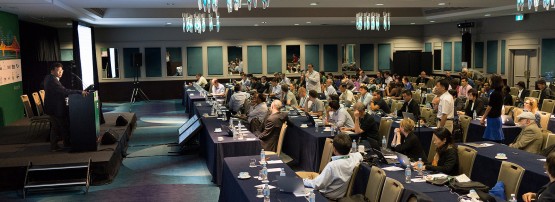
It’s an understatement to say the recent APNIC 38 conference was a busy one.
In addition to the regular workshops, presentation sessions, Policy SIG and Members meeting, there was a new security track, a Pacific Industry workshop, new webcast features, a trial of CONFER, parallel events with partner organizations like APTLD, APIX and ISOC, and a whole series of visits to APNIC’s offices for interested Members. It was a full week indeed!
Thinking back on the event, APNIC 38 reinforced four themes in my mind:
1. The value of the workshop week. The hands-on training which features at APNIC, APRICOT, and NOG meetings provides a rare opportunity for network engineers to learn the latest from genuine experts in Internet operations. Some of the delegates at APNIC 38 had never attended APNIC training before and were very excited by the new knowledge they gained. Our APNIC trainers worked hard during the week, and I especially want to thank our respected colleagues from the community who supported the workshops: Philip Smith, Champika Wijayatunga and Amante Alvaran. Their time and expertise was greatly valued.
2. The value of sharing experience and knowledge. I was impressed with the great lineup of speakers from around the world sharing views on IPv6 deployment, DNSSEC, network performance, measurement, routing, and more. The IPv6 plenary was a highlight as usual, as was the new Security Track. It was great to have many of the CERTs from the region here sharing what they are seeing in their economies with the rest of the Asia Pacific community.
3. The value of discussing as a group how we want to manage Internet resources. The Member survey results were presented at the conference, providing ample fuel for discussion about APNIC’s performance and future direction. The APNIC Member Meeting and the Policy SIG also featured strong discussion and community feedback on how the community should manage its resources and responsibilities. And at this meeting we also discussed how our region provides its voice to the global discussions on how Internet resources should be managed globally, as part of the IANA Stewardship Transition. They were all excellent sessions and great examples of the bottom-up, community-driven ethos which APNIC supports.
4. And finally, the recognition of the Asia Pacific technical community, by political decision-makers. Having Australia’s Communications Minister, Malcolm Turnbull, and the next Director General of the ITU, Houlin Zhao, attend and speak at APNIC 38 was significant. What struck me was that they came not only to speak to us, but to listen to us as well. This was a mark of respect for the technical community, and it really does highlight the growing recognition of what we all do in operating and managing the Internet in the region.
It was great to welcome many new faces to the conference (as well as catch up with lots of old ones). I hope you found the experience as valuable and rewarding as I did.
See you in Fukuoka for APRICOT 2015!
The views expressed by the authors of this blog are their own and do not necessarily reflect the views of APNIC. Please note a Code of Conduct applies to this blog.
